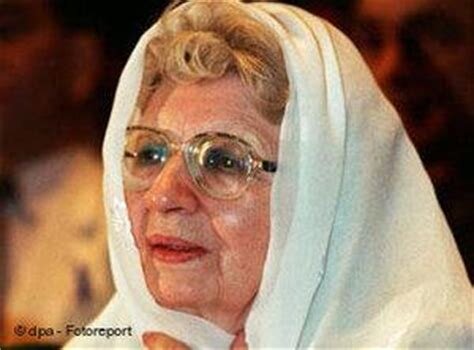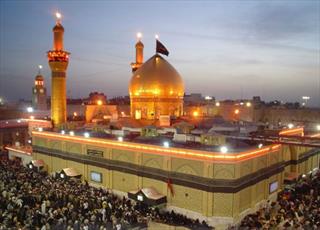Hawzah News Agency – Annemarie Schimmel was born on April 7, 1922, in Erfurt, Germany, into a Protestant family. He became interested in the Eastern world and Islamic studies from an early age and began learning Arabic at the age of 15 and memorized a part of the Qur'an and learned Persian and Turkish languages a few years later. Schimmel graduated from the University of Berlin with a degree in Oriental Languages and Islamic Art at the age of 19 and received her Ph.D. in History of Religions from the University of Marburg in 1951. She taught for many years in Islamic theology, the history of religions, and Sufism in German, Turkish, and American universities. Schimmel was fluent in German, English, Turkish, Arabic, Persian, French, and Urdu languages and published some books in these languages. She died on 1 February 2001 and buried in the city of Bonn, Germany, with the presence of nearly 700 Muslims and Christians from all over the world. On her tombstone, the following sentence has been engraved:
الناس نیام فاذا ماتوا انتبهوا
people are asleep and wake up when they die
This sentence is attributed to the Prophet (PBUH) or Imam Ali (AS).
Annemarie Schimmel believed that the image presented by medieval Europe from Islam and Muslims and the Prophet of Islam was distorted. She believed that her understanding of Islam and Muslim culture was very different from that of other Orientalists because she claimed to have gone to villages and interacted with the people and gained much information. She also believes that the Shias, contrary to what is alleged against them, do not question the value and validity of the Prophet's Sunna (tradition). Furthermore, in some cases, they adhere to it more than the Sunnis. However, she also has some mistakes in her works concerning Islam in general, and Shia school of thought in specific.
She published a paper about Imam Husayn (AS) titled: “Karbala and the Imam Husayn in Persian and Indo-Muslim literature,” which begins as follows:
‘I still remember the deep impression which the first Persian poem I ever read in connection with the tragic events of Karbala left on me. It was Qa’ani's elegy which begins with the words:
What is raining? Blood.
Who? The eyes.
How? Day and night.
Why? From grief.
Grief for whom?
Grief for the king of Karbala’.
A thorough examination of Schimmel’s works shows that in her works, Yazid deserves to be cursed and hated by Muslims as he was responsible for the tragedy of Karbala in which the grandson of the Prophet (PBUH) with his family members and companions was martyred. She writes:
‘Husayn and Yazid stand in the same line as Moses and Pharaoh.’
She further explains that the second Caliph of the Umayyad dynasty [Yazid] was responsible for the events of Karbala in 680 AD in which the grandson of the Prophet (PBUH) was martyred, after which his name became the subject of curse for all true Muslims.
In the writings of Professor Schimmel, Imam Husayn (AS) represents honor, sanctity, purity, self-sacrifice, and magnanimity, and together with his mother, brother, father, and grandfather, they form Al-i ‘Aba (People of the Cloak). The martyrdom of Husayn (AS) and his companions in 61 AH led the Shias to show their devotion to the Imam (AS) by holding religious rites and mourning for the Imam (AS), his family and companions. From this Orientalist's perspective, the event of Karbala is a turning point in world history. Since she is a woman, she also pays attention to the high position of Zaynab (SA) and presents her as a full-fledged lady who completes the Imam's mission. Professor Annemarie Schimmel says beautifully about Zainab (SA) that it is due to a special force that Zainab was able to break the bayonets and take her brother's head to the sky and tell her Lord that, 'this sacrifice is for you.' No one except her could do so.
She has searched in details about the appearance of the name of Imam Husayn (AS) in the works of many Muslim, both Shia and Sunni, poets and mystics such as Sana'i (d. 1131) (in his Divan and Hadiqat al-Haqiqa) and 'Attar (in his Divan). According to her, the imagery becomes even more colorful in the following centuries when the Shi'i character of the Bektashi order increased and made itself felt in ritual and poetical expression. Husayn b. Ali is 'the secret of God,' the 'light of the eyes of Mustafa; thus, Seher Abdal, (16th cent.), and his contemporary, Hayreti, call him, in a beautiful Marthiya, 'the sacrifice of the festival of the greater jihad.' Has not his neck, which the Prophet used to kiss, become the place where the dagger fell? In the same work, she elaborates on the theme of Imam Husayn (AS), as presented in Sindhi literature. Then she deals with Muhammad Iqbal, who was undoubtedly a Sunni poet and philosopher, and how he portrayed Imam Husayn (AS) in his works. Iqbal, like his predecessors, would also allude to the fact that Husayn, the prince of the best nation, used the back of the last Prophet as his riding camel, and most beautiful is Iqbal's description of the jealous love that became honored through his blood, which, through its imagery, again goes back to the account of the martyrdom of Husayn b. Mansur al-Hallaj, who rubbed the bleeding stumps of his hands over his blackened face in order to remain Surkh ru, red-faced and honored, despite his suffering. For Iqbal, the position of Husayn in the Muslim community is as central as the position of the surat al-ikhlas in the Holy Book.
Finally, Annemarie Schimmel is not free of mistakes in her judgments about Islam and Shia school of thought. However, her account of Imam Husayn (AS), his uprising, and the tragedy of Karbala remain as one of the best accounts presented by the Orientalists.
By: Hujjat al-Islam Sayed Mustafa Daryabari and Dr. Morteza Karimi
Sources:
1. Annemarie Schimmel, Karbala and the Imam Husayn in Persian And Indo-Muslim literature, al-Serat, vol. 12, 1986.
2. Annemarie Schimmel, Mystical Dimensions of Islam, University of North Carolina Press ,1975.
3. Shams Gilani, Alireza, Imam Husayn (AS) dar Athar-e Sharq Shenasan, Published in http://pajoohe.ir.
4. http://fa.wikishia.net




Your Comment